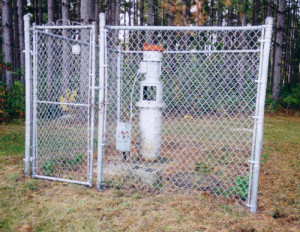Challenge
In the spring of 2002 a strong gasoline odor was reported in the drinking water at a small bulk petroleum facility in northern Indiana. Subsequent testing of the water revealed the water contained high levels of benzene and MTBE. The discovery of impacted drinking water at the site prompted investigation of drinking water wells on surrounding properties. This investigation showed that an elementary school (located 1,500 feet downgradient of the site) serving 450 students had MTBE in its water supply at a level ten times greater than the State drinking water advisory level. The State of Indiana required the bulk facility owner to initiate a subsurface investigation to determine if it was the source of the MTBE-impacted groundwater, and if so, to delineate the plume extent and implement remedial measures. The bulk facility owner contracted Mundell for assistance.
Action
Because of the sensitive population impacted by this MTBE plume and the high level of regulatory and media attention, Mundell initiated an expedited site investigation to delineate the extent of the MTBE plume. In less than six months Mundell completed over 131 soil borings and installed 45 monitoring wells which fully delineated the plume to the State’s satisfaction. While the investigation was ongoing, Mundell personnel worked with the School administration and State agencies to conduct several public-awareness meetings. Mundell also designed and installed a filtration system in the School to provide an immediate safe drinking water supply while the MTBE-impacted groundwater is undergoing remediation.
Results
The initial response of the community, and especially school children parents, was very hostile and distrustful. By rapidly assessing the extent of the MTBE plume and regular, effective communication with the community, public concern has dropped significantly. In coordinating investigation/remediation activities with Federal, State, County and School officials Mundell has increased the level of confidence between all concerned parties and has seen significant cooperation in helping to move the remediation forward.



